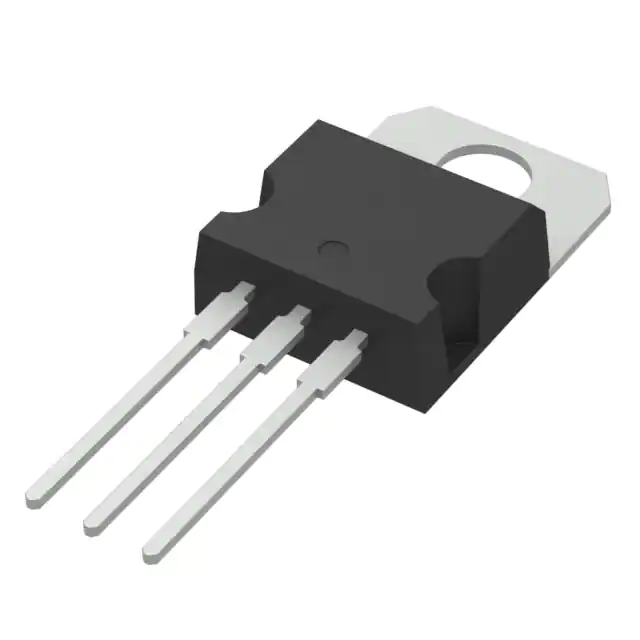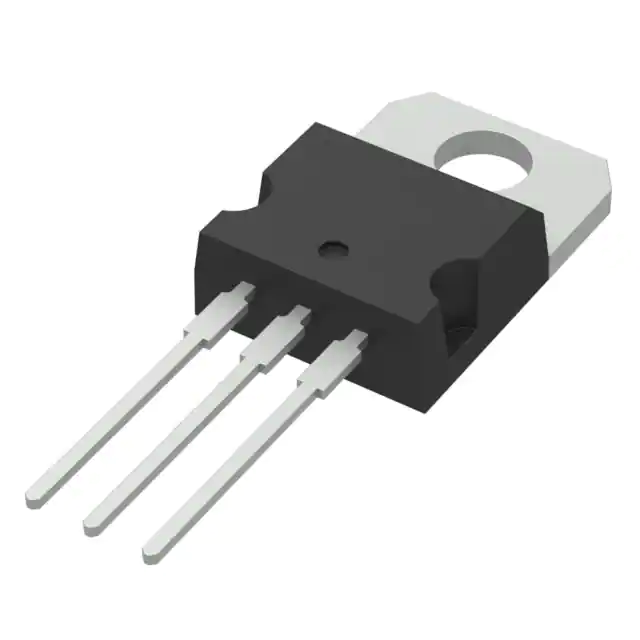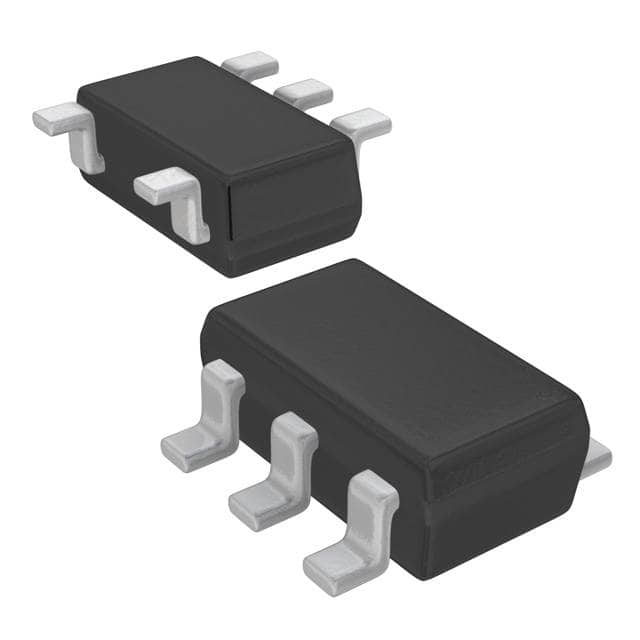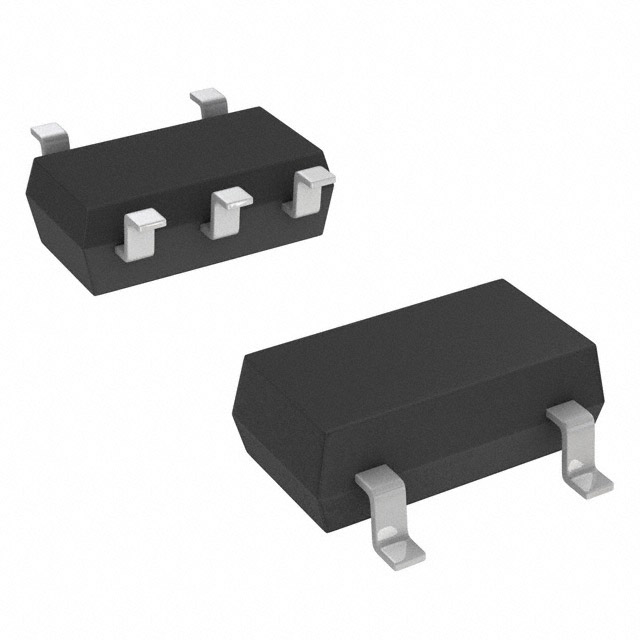L7805CV Voltage Regulator: Features, Applications, and Practical Examples

- Part No.:
- L7805CV
- Manufacturer:
- STMicroelectronics
- Package:
- TO-220-3
- Description:
- IC REG LINEAR 5V 1.5A TO220AB
- Quantity:
- Payment:

- Shipping:

Article Details
- Details
- Specifications
- Comparison
The L7805CV is a member of a family of linear regulators, including the 78XX which has an output voltage of 5V. The best known version is the L7805CV that provides 5V. And it's ideal for use in power supply modules for embedded systems, microcontroller development boards, and motor drives.
Features
- Output current up to 1.5 A
- Output voltages of 5; 6; 8; 8.5; 9; 12; 15; 18;24 V
- Thermal overload protection
- Short circuit protection
- Output transition SOA protection
- 2 % output voltage tolerance (A version)
- Guaranteed in extended temperature range(A version)
Application Example
Providing 5V Power to an Arduino.
Scenario:There you are feeding an Arduino Uno or Nano from a 12V power adapter, while those Arduino's want a reliable 5V powersource.
Key Points:
- Don't hook 12V to Arduino's 5V pin. It can cause damage.
- The L7805CV will handle 12V down to 5V.
- Use a heatsink to avoid overheating.
Standalone Sensor Power Supply
Scenario:You're working on a temperature and humidity sensor module (such as DHT22/DS18B20), powered by 9V battery but the sensor needs a stable 5V voltage.
Key Points:
- The voltage stabilizes, the readouts of the sensor will not be influenced by the power voltage.
- Use decoupling capacitor: 0.33µF at input, 0.1µF at output.
Small Robot Power System
Scenario:You're building a small robot. The motors are 12V, but my control board (a STM32 or ESP32) can only take 5V.
Key Points:
- Protects the control board from overvoltage damage.
- Make sure you don't draw more than the maximum current for which it's rated (1A) without a proper heatsink!
- DIY Breadboard Power Supply
You are constructing breadboard circuits that run on a 9V battery or 12V adapter, but the parts themselves require 5V.
Key Points:
- You can add a switch and Status LED for power savvy operation.
- To be safe, throw on some heat shrink or 3D print your own case.
Analysis of advantages and disadvantages
Advantages:
- Simple and easy to use, requiring only three pins
- Low cost, suitable for small projects
- Built-in multiple protections, high security
- Stable output voltage, no need for adjustment
Disadvantages:
- Low efficiency: the part of the voltage beyond 5V consumed as heat (the higher the input voltage, the significant portion of the pressure used as heat energy)
- External aleenes for cooling to avoid overheating
- Please do ti use for the battery powered, high requirement applications (please choose other modules, like LM2596 switching module)
Conclusion
L7805CV is a classic linear voltage regulator power supply, for a variety of electrical equipment rReliable 5 V fixed output voltage regulators.Internal thermal overload protection, as well as safe operating area protection! While being less efficient than switching power supplies, it is easy to use and has a small footprint, therefore an important role is played by this device in the electronics industry. It's a great beginning point for those new to how voltage regulators function.
- Product attributes
- Attribute value
- Manufacturer:
- STMicroelectronics
- Series:
- -
- Package/Case:
- TO-220-3
- Packaging:
- Tube
- Product Status:
- Active
- Resistance:
- Positive
- Tolerance:
- Fixed
- Power (Watts):
- 1
- Composition:
- 35V
- Features:
- 5V
- Temperature Coefficient:
- -
- Operating Temperature:
- 2V @ 1A (Typ)
- Supplier Device Package:
- 1.5A
- Ratings:
- 8 mA
- Size / Dimension:
- -
- Height - Seated (Max):
- 62dB (120Hz)
- Number of Terminations:
- -
- Failure Rate:
- Over Temperature, Short Circuit
| Image |  |
 |
| Part Number | L7805CV | L7805CV-DG |
| Manufacturer | STMicroelectronics | STMicroelectronics |
| Series | - | - |
| Package/Case | TO-220-3 | TO-220-3 |
| Packaging | Tube | Tube |
| Product Status | Active | Active |
| Output Configuration | Positive | Positive |
| Output Type | Fixed | Fixed |
| Number of Regulators | 1 | 1 |
| Voltage - Input (Max) | 35V | 35V |
| Voltage - Output (Min/Fixed) | 5V | 5V |
| Voltage - Output (Max) | - | - |
| Voltage Dropout (Max) | 2V @ 1A (Typ) | 2V @ 1A (Typ) |
| Current - Output | 1.5A | 1.5A |
| Current - Quiescent (Iq) | 8 mA | 8 mA |
| Current - Supply (Max) | - | - |
| PSRR | 62dB (120Hz) | 62dB (120Hz) |
| Control Features | - | - |
| Protection Features | Over Temperature, Short Circuit | Over Temperature, Short Circuit |
| Operating Temperature | 0°C ~ 125°C | 0°C ~ 125°C |
| Grade | - | - |
| Qualification | - | - |
| Mounting Type | Through Hole | Through Hole |
| Supplier Device Package | TO-220 | TO-220 |
inventory:16,354
Please send an inquiry. Send us your inquiry, and we will respond immediately.

-
MIC5504-1.8YM5-TR
Microchip Technology

-
MIC5504-3.3YM5-TR
Microchip Technology

-
MIC5365-3.0YC5-TR
Microchip Technology

-
MIC5365-1.8YC5-TR
Microchip Technology

-
MIC5365-2.5YC5-TR
Microchip Technology

-
MIC5365-3.3YC5-TR
Microchip Technology





